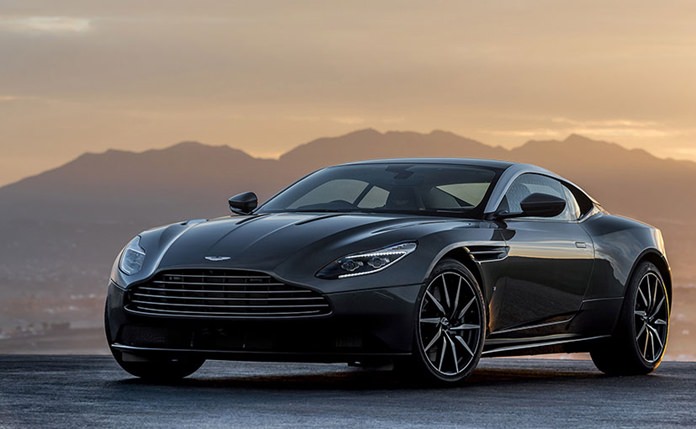
I am heartily sick of publicity hand-outs proclaiming that the new Whatever has the DNA of the original Whatevers. This is just PR-Speak. Your personal DNA was handed down to you from your parents, and nothing to do with what car they drove to consummate their tryst. Vehicular DNA does not exist.
Take, for example, the tale of Aston Martin, founded in 1913 and still going “strong” with the DB 11. Lionel Martin and Robert Bamford had joined forces as Bamford & Martin the previous year to sell cars made by Singer from premises in Callow Street, London where they also serviced GWK and Calthorpe vehicles. Martin raced specials at Aston Hill near Aston Clinton, and the pair decided to make their own vehicles. Incidentally, the Bell Inn at Aston Clinton hosts a wonderful restaurant (the most snobby five star I’ve ever been lucky to dine at).
The first car to be named Aston Martin was created by Martin by fitting a four-cylinder Coventry-Simplex engine to the chassis of a 1908 Isotta-Fraschini. Whose DNA are we talking about here?
After WW1 they designed their own car, but went bust, saved by Count Louis Zborowski. The DNA is getting a bit scrambled.
Aston Martin went bankrupt again in 1924 and was bought by Dorothea, Lady Charnwood who put her son John Benson on the board.
That did not work, as Aston Martin went bust again in 1925. Aston Martin failed again in 1925 and the factory closed in 1926.
Later that year, Bill Renwick, Augustus (Bert) Bertelli and investors including Lady Charnwood took control of the business. They renamed it Aston Martin Motors and moved it to the former Whitehead Aircraft Limited Hanworth works in Feltham. Renwick and Bertelli had been in partnership some years and had developed an overhead-cam four-cylinder engine using Renwick’s patented combustion chamber design, which they had tested in an Enfield-Allday chassis. The only “Renwick and Bertelli” motor car made, it was known as “Buzzbox” and still survives.
However, financial problems reappeared in 1932. Aston Martin was rescued for a year by Lance Prideaux Brune before passing it on to Sir Arthur Sutherland. (The DNA acquires a Knight of the Realm.)
In 1936, Aston Martin decided to concentrate on road cars, producing just 700 until World War II halted work. Production shifted to aircraft components during the war.
After WW2, Aston Martin was bought by tractor man David Brown (the DB of Aston Martin) and put under the control of his tractor group. (Is there any DNA left?) But Aston Martin was again financially troubled. In 1972 David Brown paid off all its debts, and handed it for £101 to Company Developments, a Birmingham-based investment bank consortium chaired by accountant William Willson.
However, Go to Japan. California’s exhaust emission requirements stopped Aston’s US sales and again pulled Aston Martin into receivership at the end of 1974.
The receiver sold the business in April 1975 for £1.05 million to North American businessmen Peter Sprague of National Semiconductor and Toronto hotelier, George Minden, and Jeremy Turner, a London businessman, who insisted that Aston Martin remained a British controlled business.
Six months later in September 1975 the factory – shut-down the previous December – re-opened under its new owner Aston Martin Lagonda (1975).
In January 1981 there having been no satisfactory revival partners Alan Curtis and Peter Sprague sold to Pace Petroleum’s Victor Gauntlett and Tim Hearley of CH Industrials taking over as joint 50/50 owners at the beginning of 1981, with Gauntlett as executive chairman.
As trading became tighter in the petroleum market, and Aston Martin was requiring more time and money, Gauntlett agreed to sell Hays/Pace to the Kuwait Investment Office in September 1983.
From there you need to be a forensic accountant to follow the money (debt) trail through a shipping company, Ford Motor Company and then in March 2008 Aston Martin announced a partnership with Magna Steyr to outsource manufacture of over 2,000 cars annually to Graz, Austria, reassuringly stating: “The continuing growth and success of Aston Martin is based upon Gaydon as the focal point and heart of the business, with the design and engineering of all Aston Martin products continuing to be carried out there.” (How’s the DNA looking now?)
The boardroom musical chairs has continued and now Aston Martin is “owned” by a Middle East investment company, while it continues to lose money, which is probably the only “DNA” which has been passed down through the years.




